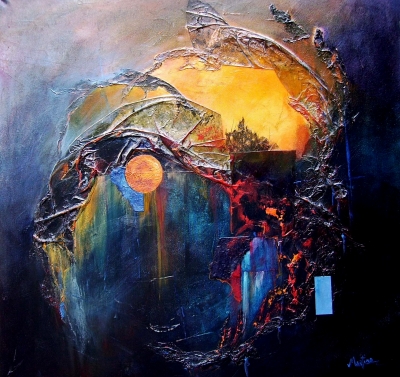 Robert Delaunay , 1912-13, Le Premier Disque, 134 cm (52.7 in.), Personal assortment. And extra than the anarchic abandon of Abstract Expressionism, the Washington Coloration Faculty’s clean traces constituted a pro-American aesthetic, as artwork historian Antonia Dapena-Tretter argues in Work as Propaganda: Mixing Patriotism with Art,” a paper about Acres of Walls.” Several of the paintings heavily function red, white, and blue.
Robert Delaunay , 1912-13, Le Premier Disque, 134 cm (52.7 in.), Personal assortment. And extra than the anarchic abandon of Abstract Expressionism, the Washington Coloration Faculty’s clean traces constituted a pro-American aesthetic, as artwork historian Antonia Dapena-Tretter argues in Work as Propaganda: Mixing Patriotism with Art,” a paper about Acres of Walls.” Several of the paintings heavily function red, white, and blue.
Whitney informed Sims, I spotted I could put types, colours, and marks together and still have a lot of air.” He defined that the space is within the shade, not across the coloration.” (Another current show, at the Karma gallery and publishing home, on Great Jones Road, focusses on transitional works by Whitney from that interval.) Drawing is an not noticeable strength of Whitney’s Harlem present, which is curated by Lauren Haynes and limited to work made since 2008.
One hallway options the eerie Intelligence Artwork Collection ,” which celebrates historical accomplishments in intelligence.” Right here, work of warplanes resemble action film concept artwork, whereas different works appear to be Norman Rockwell painted a baby’s fantasy about changing into a spy.
From 1909 to 1913 many experimental works in the seek for this ‘pure art’ had been created: Francis Picabia painted Caoutchouc, 1909, 20 The Spring, 1912, 21 Dances at the Spring 22 and The Procession, Seville, 1912; 23 Wassily Kandinsky painted Untitled (First Abstract Watercolor), 1910, 24 Improvisation 21A, the Impression collection, and Image with a Circle (1911); 25 František Kupka had painted the Orphist works, Discs of Newton (Study for Fugue in Two Colours), 1912 26 and Amorpha, Fugue en deux couleurs (Fugue in Two Colors), 1912; Robert Delaunay painted a series entitled Simultaneous Home windows and Formes Circulaires, Soleil n°2 (1912-13); 27 Léopold Survage created Colored Rhythm (Examine for the movie), 1913; 28 Piet Mondrian , painted Tableau No. 1 and Composition No. eleven, 1913.
Seeing the Thoughts Behind the Art: Folks Can Distinguish Abstract Expressionist Paintings From Extremely Similar Paintings by Kids, Chimps, Monkeys, and Elephants” by Angelina Hawley-Dolan from the Department of Psychology at Boston School and Ellen Winter of Venture Zero on the Harvard Graduate College of Training appeared within the March 2011 issue of Psychological Science.
